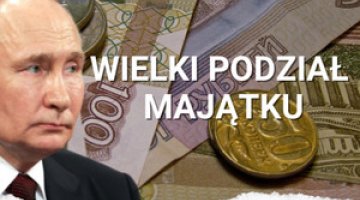Preparing for a crisis on the European gas market
Due to the increasing risk of a Russian invasion of Ukraine, the growing tension in Russia’s relations with the West, and the persistent challenges on the European gas and energy market, information is being released about the plans to protect Europe against the possibility of disruptions in hydrocarbon supplies. These efforts are mainly focused around natural gas. This is due both to the specificity of the European market (on which gas pipeline supplies from Russia traditionally play the dominant role) and to the restrictions on Russian gas supplies to the EU, which have been in place for several months, and intensified in January 2022. If there are any more problems with gas supplies from Russia, that would deepen the crisis on the market in Europe and globally, leading to further rises in already high prices and, potentially, shortages in gas deliveries.
There have been many reports in the media about what actions the US administration is planning to take; it will hold talks with US and foreign companies, as well as with natural gas suppliers (Qatar), about emergency options for gas supplies to Europe if the Russian-Ukrainian conflict affects the stability of exports from Russia to the EU. According to sources at Reuters, the administration has asked representatives of the gas sector whether their companies would be able to increase exports and delay planned maintenance work on their fields in the event of an emergency. The talks with Qatar were focused on the chances of securing additional supplies of liquefied gas in the event of a crisis. The challenges to European and global supply security will also be on the agenda for the talks between President Biden and the Emir of Qatar Tamim ibn-Hamad al-Sanim during the latter’s visit to Washington on 31 January.
Representatives of the US administration have confirmed the American commitment to the security of gas supplies during a number of conference calls with the press. On 25 January, they confirmed US cooperation in this area with the Europeans, and also that measures were being taken to identify the availability of additional amounts of natural gas in North Africa, the Middle East, and the US, as well as increasing the flexibility in the existing contracts with key suppliers and recipients, as well as access to stored gas supplies. Media reports (in the Financial Times) also state that representatives of European countries, including the UK, are participating in talks with exporters concerning both short-term and long-term deliveries.
Finally, it is clear that the issue of security of gas supplies to Europe, especially the possibility of further challenges in the event of a possible Russian invasion of Ukraine, and Ukraine’s energy security are areas of recently intensified cooperation between the EU and the US. This has been confirmed by the joint statement on US-EU cooperation in energy security by Ursula von der Leyen, President of the European Commission, and President Joe Biden, published on 28 January. This topic will also be discussed during the EU-US Energy Council scheduled for 7 February.
At the same time, the European side is preparing to take its own measures, independent of the US, but as yet there has been much less information publicly available about these plans. It is known that on 19 January, the European Commission has convened an extraordinary meeting of the Gas Coordination Group, to be attended by representatives of the member states and the gas sector. EU Energy Commissioner Kadri Simson has stressed the importance of being prepared for possible disruptions in supplies from Russia, updating contingency plans, and ensuring cast-iron cooperation between member states if problems arise. The Commission has also been holding talks with producers for several months: in the fall of 2021 with Qatar and Norway, and at the beginning of February will also hold talks about the current situation on the gas market with Azerbaijan (during the ministerial meeting of the countries involved in the Southern Gas Corridor).
Commentary
- It is difficult to clearly assess the progress of the measures intended to prepare the EU for a possible gas crisis. Due to the scarcity of publicly available information, the details of the discussions at the Gas Coordination Group meetings and their specific consequences remain unknown. Additionally, the EU has not yet taken any coordinated and effective action to secure alternative supplies of the raw material. As a result, comments have been heard that the EU is not sufficiently involved in the issues related to the gas crisis, which risk the situation worsening depending on Russia’s next moves.
- The scarcity of information on the EU’s actions contrasts with the frequent reports on the US’s moves, including Washington’s cooperation with Brussels. This proves the US’s strong commitment to the issue of securing Europe against more serious problems on the gas market, which would undoubtedly also affect global gas sales. At the same time, Washington’s actions also seem to represent an attempt to convince some of the more sceptical European countries to support the stronger version of the planned sanctions against Russia – including its energy sector and the Nord Stream 2 gas pipeline – if it invades Ukraine, and to minimise the negative consequences of such sanctions for Europe. Moreover, highlights the change in the Biden administration’s policy regarding NS2 (it seems increasingly likely that it will be covered by sanctions), and that since last year the US’s main partner in its talks and plans has been the European Commission, and not the German government.
- It is unclear, however, whether the US diplomatic offensive and/or the EU’s efforts will make any real contribution to securing additional ‘emergency’ supplies or increasing Europe’s energy security in the coming months. The situation on the world market is quite tense; there is a dearth of significant ‘spare’ quantities of available gas, which (such as the gas from Qatar) is largely contracted under long-term agreements. The world’s largest LNG producers (Australia, Qatar and the USA) are using the export capacity available to them to the full, and the construction of new LNG terminals usually takes several years. Moreover, European customers can now draw in additional LNG supplies, thus outperforming the world market. This situation has been going on since the beginning of January, when a record volume of LNG arrived in Europe. In addition, the availability of additional supplies depends largely on the (currently unpredictable) weather. Thanks to favourable weather conditions, Europeans have recently been able to buy loads of LNG which have been over-contracted by Chinese companies or were surplus to requirements in Brazil. However, this situation is most likely temporary, due to the continuing winter and the ongoing rise in demand for natural gas around the world.
- Apart from the limitations in the availability of an alternative to the Russian gas, the capacity of LNG terminals and (perhaps even to a greater extent) interconnectors in Europe also remain a challenge when it comes to planning emergency actions. One example of this is the fact that the largest capacity for importing liquefied gas in the EU is located in Spain, which is not well connected by gas pipelines with France or the rest of Europe. As a consequence, the EU may have problems with supplementing gas supplies and sending it to the most demanding customer groups if more serious problems arise with the availability of Russian gas. The situation has been aggravated by the low level at which European gas warehouses are currently filled.
- As a result, if supplies from Russia were to a large extent limited or suspended over the coming months, the EU, apart from increasing its imports, will also have to take measures to reduce demand in some sectors. These would undoubtedly have negative economic consequences for Europe, which has already been weakened by the pandemic and its spin-off effects.
- Additionally, another, more serious possible crisis on the gas market will pose a significant challenge for intra-EU cohesion. The member states vary in the extent to which they are prepared for the risk of interruptions in the supply of raw materials, as illustrated by, for example, the varying degree to which their storage warehouses are filled. Gas also plays a different role in the energy mixes of individual countries; they also differ in terms of their wealth, and thus their scope for buying emergency supplies at exceptionally high prices. It is thus unclear whether and how effectively intra-EU solidarity will stand up in the event of a crisis; this includes the application of the mechanism provided for in the Gas Security of Supply Regulation. In an extreme scenario, the EU’s ability to support the countries of the European Eastern Neighbourhood, principally Ukraine and Moldova, will also be significantly limited.





